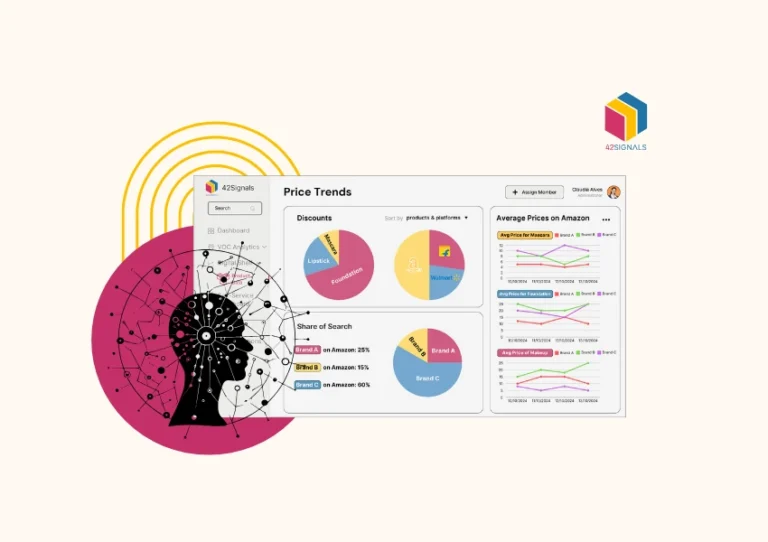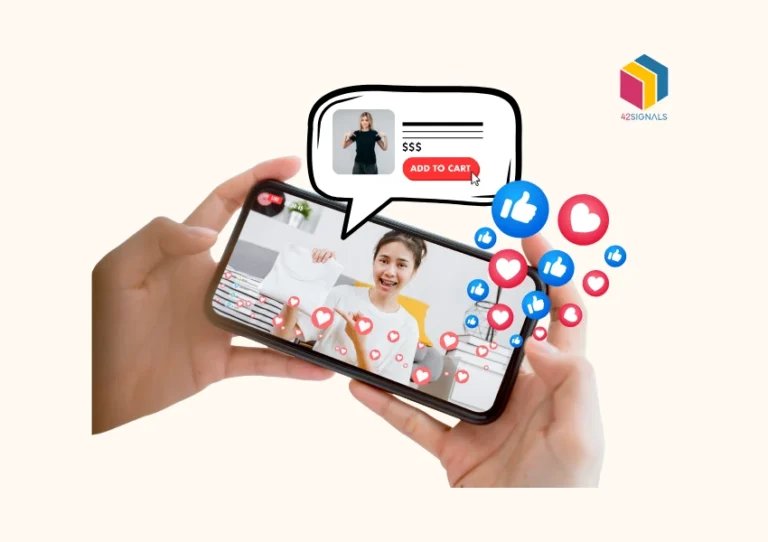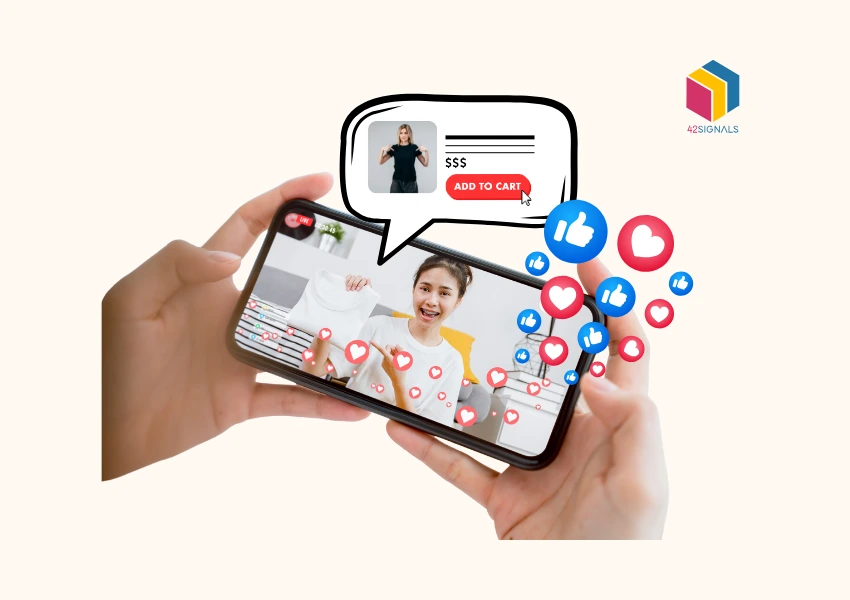Pricing in ecommerce can be tricky. It’s part psychology, part strategy, and a whole lot of intuition. Sure, AI tools like demand forecasting or predictive analytics can process data faster than your team can finish lunch. While AI price optimization can be a game-changer, human instinct and touch may still be required.
Let’s understand the intricacies of AI price optimization and how it helps.
AI Price Optimization – How it Helps ECommerce Businesses
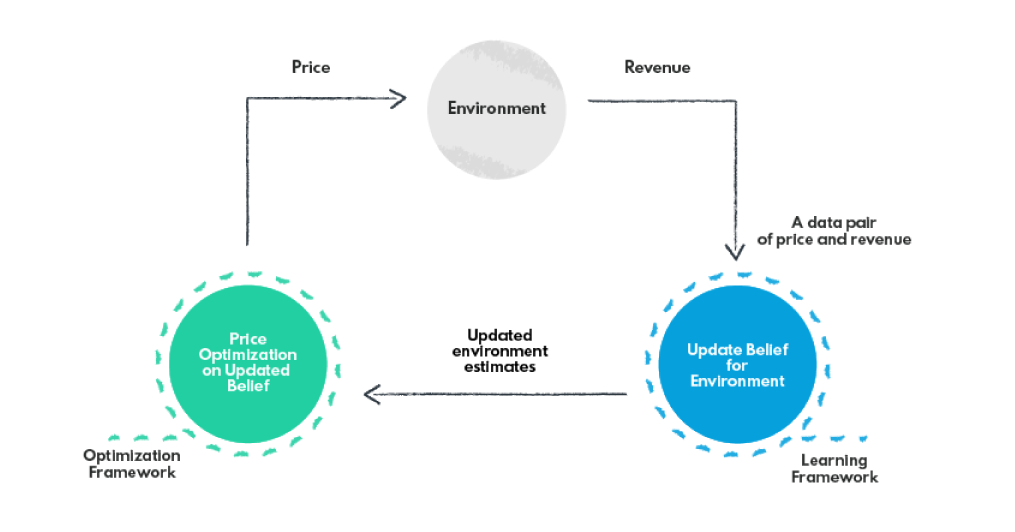
Image Source: Datafeed Watch
1. The Good, the Bad, and the Ugly of AI Pricing
Let’s look at a hypothetical study where we recently helped a boutique tea brand roll out AI price-optimized costs. The system was sophisticated—it tracked competitor moves and provided price changes in current time. Sales shot up 30% in the first month. But then, the customer reviews rolled in:
“Why does my chamomile cost $9 today and $14 tomorrow?”
“Feeling nickel-and-dimed by my favorite brand.”
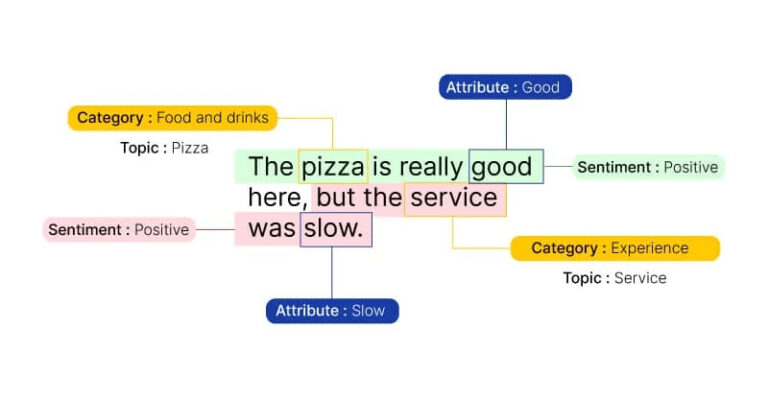
Turns out, changing prices so aggressively eroded customer trust. These can be frequent situations experienced by online ecommerce brands where steep price changes backfire. Here’s how to fix them –
- Capped price fluctuations to a 10% weekly max. This helped prevent erratic daily shifts that made prices feel unpredictable and arbitrary. Customers felt reassured when prices changed less frequently and more reasonably.
- Introduced a “Price Freeze Guarantee” for VIP subscribers. Members knew they wouldn’t see prices spike overnight. It created a sense of security and loyalty, giving them one more reason to stay engaged with the brand.
- Added human oversight to all AI-generated pricing decisions. A dedicated team member reviewed every price change the AI suggested, ensuring it aligned with customer expectations, brand positioning, and seasonal context.
The lesson? AI sees numbers. Humans see relationships. And loyalty doesn’t show up in spreadsheets.
2. Tools vs. Judgment: Finding the Balance
Demand Forecasting: Data Can’t Predict Culture
Here’s another example of a surfboard brand gearing up for summer. Their AI model recommended ordering 500 units of their “Sunset Cruiser” board based on last year’s trends. But the CEO—an ex-pro surfer—stepped in and said, “Double it. There’s a documentary dropping on 90s surf culture.”
These situations may be hard to anticipate, but aligning an item with an upcoming trend is a good way to boost sales.
Here’s the takeaway: AI predictions are a great starting point, but they lack cultural awareness. What really matters is how you layer in:
- Industry chatter and informal buzz. Trends often start in small circles—Slack groups, niche podcasts, Reddit threads. Pay attention.
- Emerging cultural moments. TikTok trends, nostalgia waves, influencer movements—these can shift consumer behavior faster than any model can react.
- Your team’s intuition. Don’t underestimate those gut feelings. A team member who’s been in the game for years may spot something AI can’t.
Competitor Dashboards: Don’t Get Caught in the Copycat Trap
Your competitor analysis dashboard notifies you: Competitor X just slashed prices on earbuds. The AI price optimization feature suggests you match them. Before you do, consider this:

- Are they clearing out old stock? If so, they may be offloading last season’s inventory, not setting a new market standard.
- Did they launch a high-profile partnership or ad campaign? Their price drop might be part of a short-term blitz that you’re not equipped to match.
- Are they trying to buy market share at a loss? Check the news—if their CEO is publicly embracing a break-even strategy, copying them might drag you into a race to the bottom.
In these moments, data needs a filter. Call a 10-minute team huddle. Look beyond the price and ask what’s really driving it.
3. The Dark Side of AI-Driven Pricing—and How to Avoid It
AI aims for the perfect price. Customers just want a fair one. If you’ve ever seen Uber surge during a storm or Amazon adjust prices mid-checkout, you know the feeling: manipulated.
That’s what happens when algorithms optimize without empathy. Here’s how you keep pricing human:
- Transparency matters. If prices change, explain why.
Example: “This jacket is priced higher in winter because we use ethically sourced down, which costs more during colder months.” A little context builds a lot of trust. - Build in empathy rules. Don’t let AI raise prices on essentials—like health products or baby items—during emergencies. Set up ethical boundaries in your tools, and enforce them.
- Let some prices stay irrational on purpose. That yoga mat at $17.99? Maybe it’s not the optimal price, but your customers love it. Sometimes, sticking to the familiar builds emotional equity.
With 42Signals, you don’t have to worry about pricing issues, with our transparent product data and pricing dashboards.

4. Price Sensitivity Modeling: Your Customers Aren’t Just Clicks
A skincare brand used price sensitivity modeling to identify shoppers who only purchased during sales. The AI pushed more discounts, and revenue spiked.
But retention tanked. Why? Their real audience was made up of skincare enthusiasts who believed discounts meant cutting corners. It hurt the brand’s credibility.
The solution wasn’t more promos—it was identity-aligned value. The team replaced discounts with a “Members-Only Formula Library,” giving customers exclusive ingredient deep dives and early product access. Retention rebounded within weeks.
Key insight: AI groups customers by behavior. Humans segment by values, identity, and trust.
5. The Hybrid Pricing Playbook (Tactics That Actually Work)
The smartest brands don’t fully automate or fully ignore AI—they build systems where machine efficiency meets human instinct with a tool like 42Signals. Here’s what that looks like in practice:
- Set up a “Why Committee.”
Once a month, gather the team to review AI’s most surprising suggestions.
Example: The AI wanted to price a skincare set at $888 because that number is considered lucky in some cultures. But the team knew their Western audience would see it as gimmicky or scammy. They scrapped it.
- Use platforms with a Manual Override Button. Make sure your tools let you pause AI activity when it makes sense. Use it to:
- Freeze prices during holidays or emotionally charged events
- Lock-in pricing for products with a cult following, where stability is part of the brand’s charm
- Hire a “Customer Whisperer.” Bring someone on your team who understands emotional context—someone from a retail or hospitality background. Their job is to:
- Read reviews and customer feedback daily
- Flag when pricing feels off-brand or exploitative
- Recommend perks like loyalty programs, limited drops, or personalized packaging that deliver value without relying on discounts
AI Price Optimization That Works With a Soul
AI is fast. It’s efficient. It’s mathematically brilliant. But here’s the truth: customers don’t fall in love with algorithms. They connect with brands that feel human.
Tools like 42Signals use predictive analytics to forecast market and category performance. Let our platform’s digital shelf analytics dashboards track the competition, and with our experts at the wheel, there’s no need to worry about errors.
Because pricing isn’t just about optimization. It’s about perception. It’s about trust.
And trust? That’s something only the right people and tools can build.
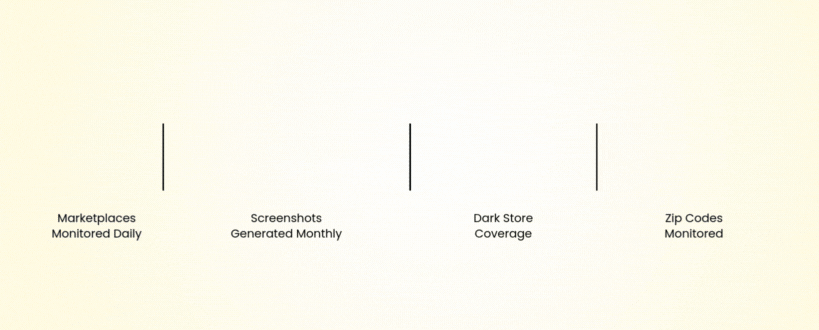
Sign up for a free trial to see our AI price optimization tactics in action.

